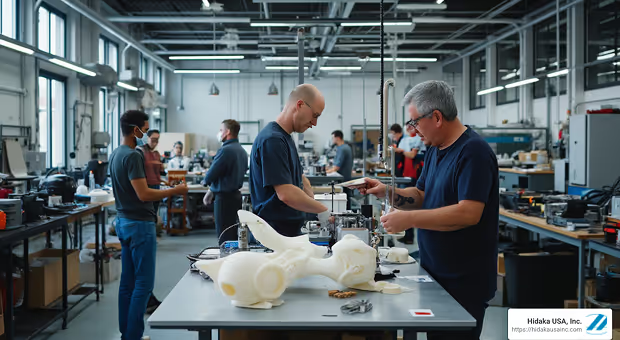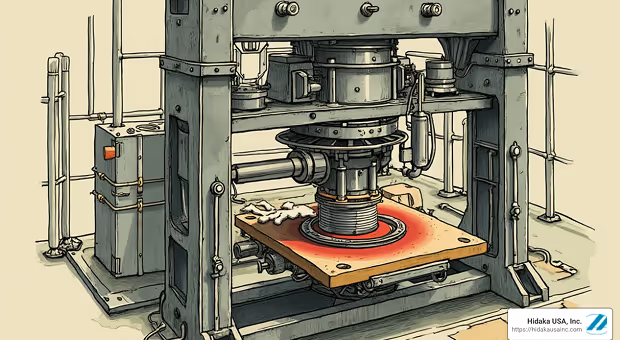The 2024 R&D Trends Forecast highlights that 59% of businesses will spend more on innovation. This is up from 56% last year, which shows that companies are focusing more on research and development (R&D) to stay competitive. The increasing focus on R&D is important for companies to find new ideas and solutions that meet market needs.
Research and development drives innovation, scalability, and profit. Businesses can unlock their full potential by planning effectively in design and development. In this quick guide, you'll discover strategies to scale your operations and tap into the power of R&D.
Identify Market Gaps
To create successful products, understand what people need. R&D can help you study the market and determine what people seek. This information makes it easier to develop products that solve real in-demand problems.
Additionally, R&D can help you identify emerging trends and anticipate future market needs. This gives you a great competitive advantage and lets you develop relevant and innovative products. You'll also tailor your products to meet specific needs and preferences.
Prototype and Iterate
Prototyping means creating a basic version of your product or idea. It helps you see if it works and if people like it. Iterating, on the other hand, means making changes and improvements based on feedback.
By prototyping and iterating, you can create a better product that people want. So, how does R&D come into play here? Here are four ways R&D can help you prototype and iterate:
- Experimentation: R&D allows you to try different things and see what works best.
- Analysis: R&D helps you analyze data and understand what people think about your prototype.
- Collaboration: R&D brings together people with different skills to work on your prototype.
- Innovation: R&D encourages creativity and helps you come up with new ideas for your product.
While parts prototyping and iterating are important, be realistic about the time and resources it takes. Set clear goals and timelines to help you stay focused. Additionally, gather feedback from a diverse group of people to ensure your product meets the needs of your target audience.
Leverage New Technologies
To stay ahead of the competition, it's important to keep up with the latest technology trends. This means using new and exciting tools in R&D. By doing so, you create offerings that stand out from the crowd.
However, you must plan carefully when adopting new technologies. A good plan will help ensure that the process is smooth and efficient. Also, consider the costs and how these technologies can help your business grow.
A recent study by the McKinsey Technology Council found that many companies are investing in new technologies. It's a move in the right direction despite the challenges they faced in 2023. One of the most popular technologies is generative AI.
There has been a lot of interest and investment in this technology in recent years. AI can unlock new opportunities in areas like robotics and virtual reality. You should consider embracing it to stay competitive.
Collaborate With Cross-Functional Teams
Involving different departments in the R&D process keeps the product in line with customer needs and company goals. Teams like marketing, finance, and customer service offer different viewpoints. Marketing helps R&D understand customer needs, while finance keeps the project within budget.
Working together also makes scaling production easier. When every team is involved early on, moving from product development to market launch goes smoothly. Each team knows what to expect, making it easier for the business to grow.
Collaboration also boosts profits. A product that meets customer needs stays cost-effective and fits long-term plans. This approach ensures the product is both innovative and profitable.
Invest in Sustainable Solutions
Sustainable solutions benefit the environment and society while being good for business. They use resources wisely and last a long time. Turn to them to save money, improve your reputation, and meet the needs of eco-conscious customers.
Focusing on sustainable products is now more important. Consumers care about eco-friendly items, and regulations are getting stricter. Here are four ways to leverage R&D for sustainable solutions:
- Develop eco-friendly products that use less energy and create less waste.
- Create new materials that are recyclable or made from renewable resources.
- Improve production processes to reduce waste and resource use.
- Explore new technologies to make operations more efficient and less harmful.
Be careful when choosing sustainable solutions; they should be practical and affordable. Involve your team and listen to customer feedback. Remember, scaling production with sustainable practices may take time to show results, so be committed to the journey.
Explore Customization and Personalization
People love personalized products, and this opens up an opportunity you can tap into to succeed. Businesses can use R&D to create items that meet specific customer needs. Planning for this can help reach more customers and increase sales.
Also, note that scalability is key for personalized products. If you can't efficiently deliver custom options, customers may lose interest. You need to plan your products for easier customization and mass production carefully.
Monitor Competitor Innovations
Watching competitors is a smart R&D strategy. By analyzing their actions, you can learn from their successes and failures. This helps you spot gaps in your market that your product can fill.
Understanding competitors' weaknesses helps with product differentiation. You can design a product that does better in areas where they fall short. If successful, these innovation strategies help increase market share and profits.
Either way, competitor analysis is a key part of strategic planning. It gives you insights that guide your design process. You need such insights to make your product stand out in the market.
Elevate Your Products With Tailored Research and Development
Research and development is a powerful tool for businesses to grow and stay competitive. By investing in R&D, you can develop new products and services, improve existing offerings, and increase efficiency. R&D can also help you reduce costs, increase revenue, and create new jobs.
If you're looking for a reliable partner for your manufacturing needs, look no further than Hidaka. We are your one-stop shop for all your manufacturing needs, from sheet metal fabrication to advanced research and development solutions. Get in touch to learn more about how we can help your business grow.






